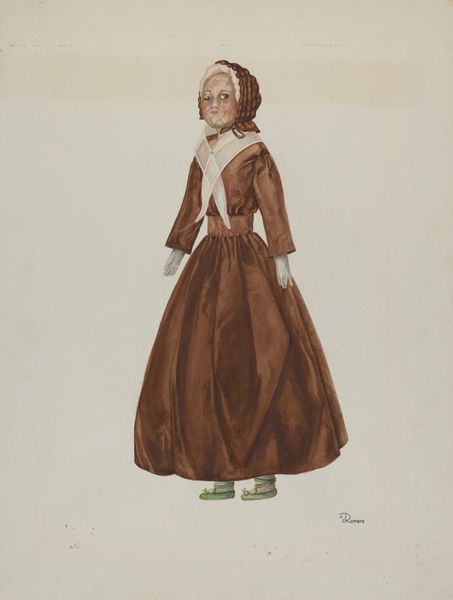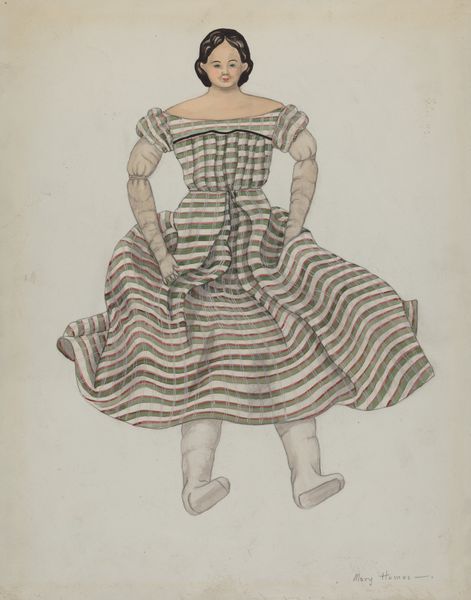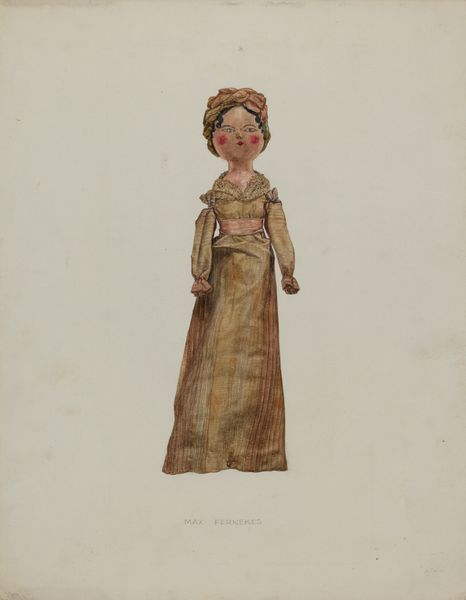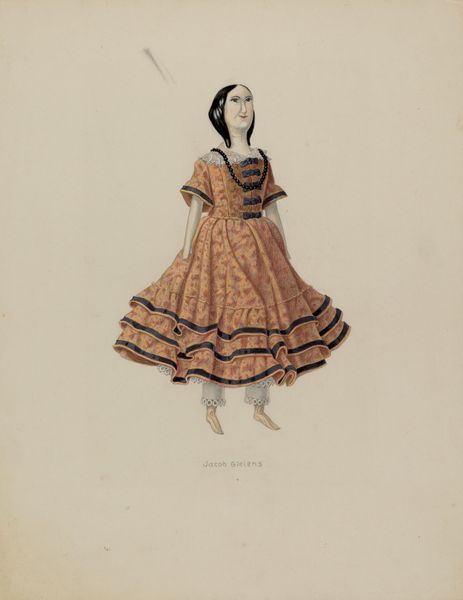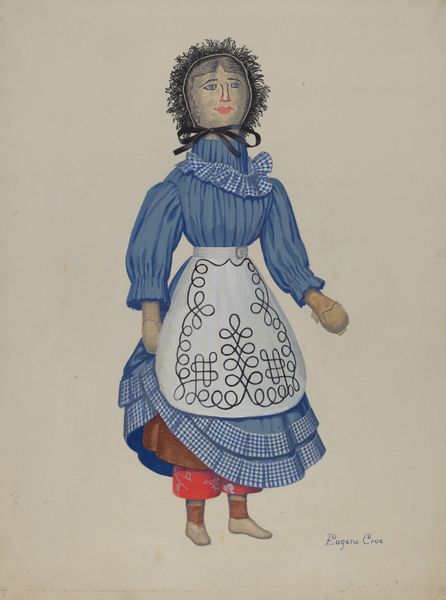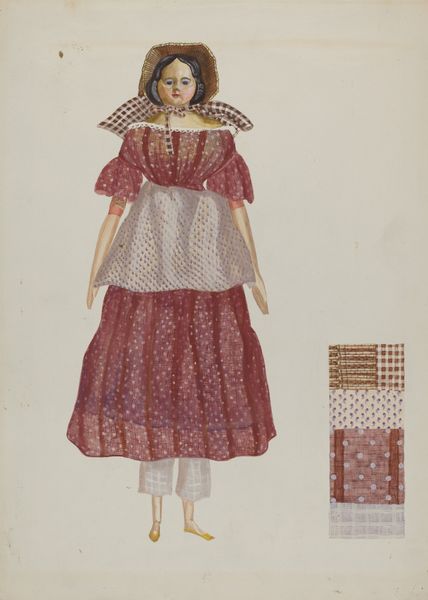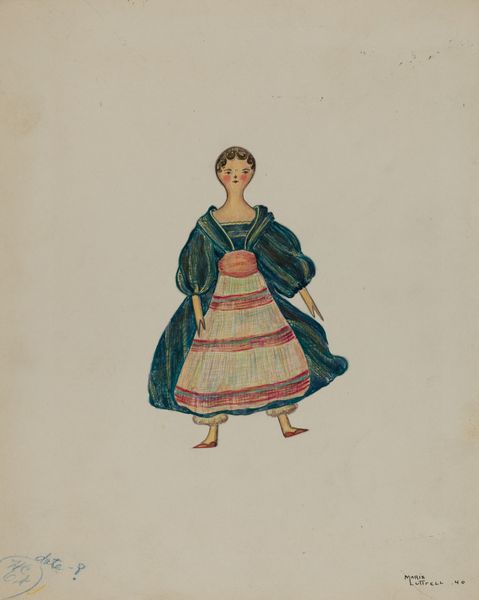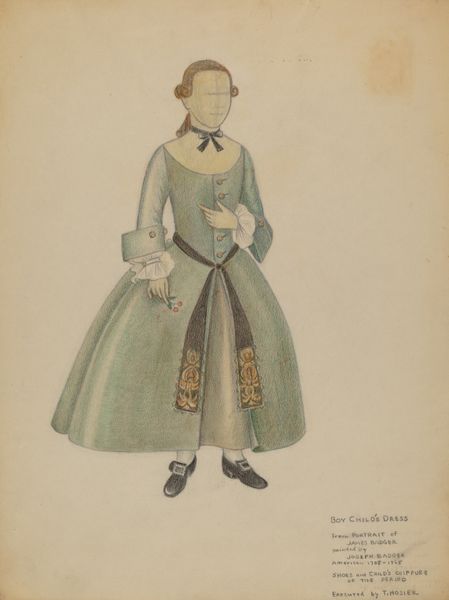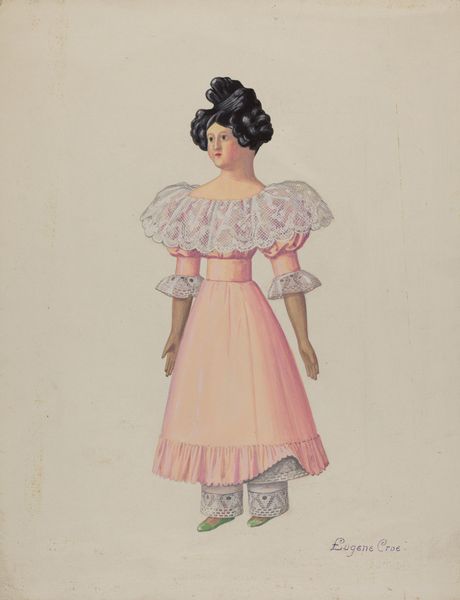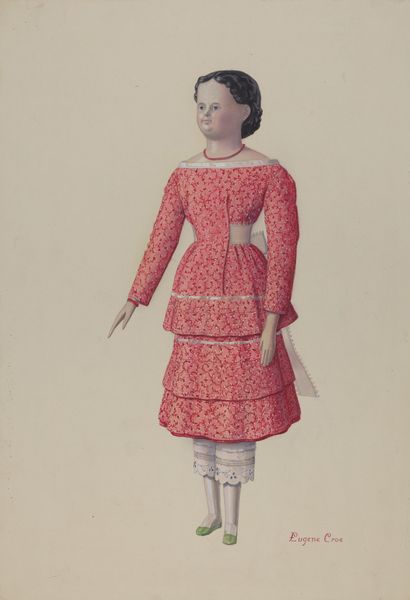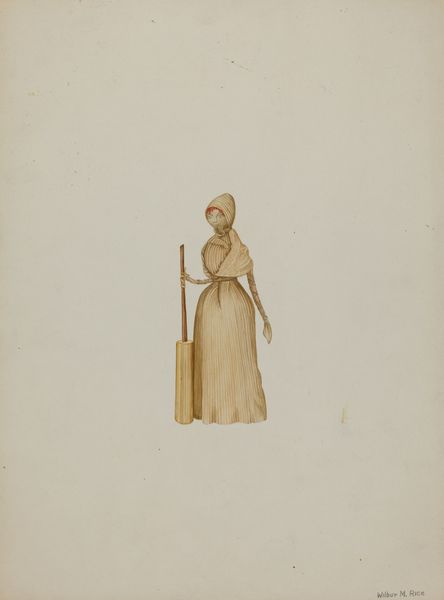
drawing, watercolor
#
portrait
#
drawing
#
water colours
#
figuration
#
watercolor
#
coloured pencil
Dimensions: overall: 28.6 x 19 cm (11 1/4 x 7 1/2 in.)
Copyright: National Gallery of Art: CC0 1.0
Curator: I find this little watercolour so haunting, and perhaps more complex than first meets the eye. We are looking at "Doll," a watercolour and coloured pencil drawing created by Kapousouz between 1935 and 1942. What strikes you initially? Editor: Melancholy. It is quiet and solitary. I can't help but think about what kind of societal constraints surrounded dolls, a child’s plaything, during that historical period. Did Kapousouz think about cultural notions around the role of little girls, childhood innocence, domestic expectations? Curator: Those are fascinating questions. It certainly compels us to think about gender and identity. Speaking of the process, let’s consider the material composition and subtle execution. Note the slightly visible sketch lines beneath the delicate washes. And then see how the coloured pencil helps define edges. Editor: Right, especially with those tiny strokes on the edge of her dress, underscoring that frilly design detail. Considering that the materials were probably mass-produced for child consumption, I am interested in how these supplies can produce such personal feelings, such evocative imagery. Curator: Exactly. Look closer, and one begins to see that what seems childlike actually becomes more enigmatic and complex. The doll's face is blurred, making her strangely unknowable. Are those blank stare, missing limbs, awkward posture suggestive of societal pressure and restriction? Editor: It’s definitely hard not to view this artwork outside of a context dominated by societal change during a turbulent period. The historical timeframe suggests the lead-up to World War II, adding layers of significance, specifically when it comes to how innocence may be prematurely terminated due to conflict or economic exploitation. What else do you notice about its formal composition? Curator: The texture. Despite the apparent softness of the watercolour medium, the artwork possesses a unique surface quality. The subtle grain of the paper, combined with the deliberate application of paint, evokes a tactile quality—an imperfect layering of translucent strokes against visible pencil lines that add rawness to the surface. Editor: It’s almost ghostly, now that you mention it. Curator: Indeed. And considering the intersectional issues that it brings to the fore, like children's play, doll manufacturing, the role of women during times of upheaval and oppression, I really can't help but see this watercolour on paper as deeply provocative, no? Editor: It is certainly something to think about, particularly now, in our turbulent times.
Comments
No comments
Be the first to comment and join the conversation on the ultimate creative platform.
